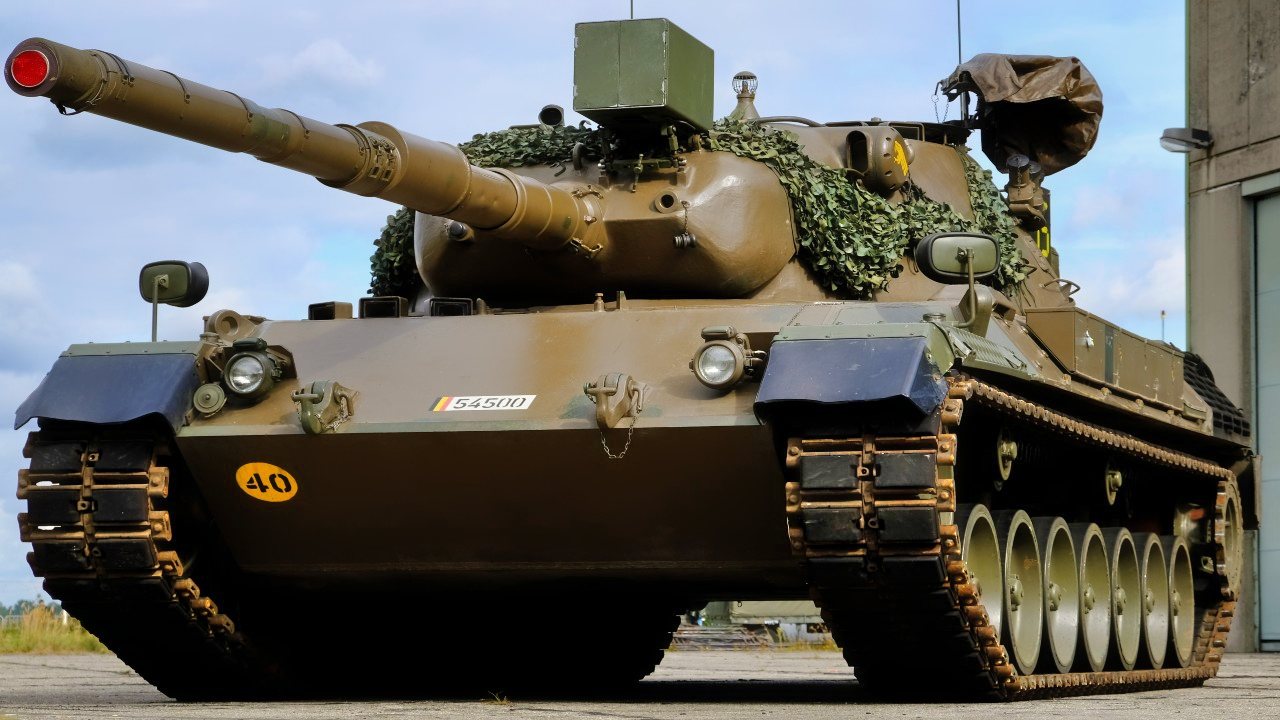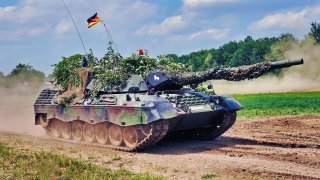The Leopard 1 Main Battle Tank Is Getting a Serious 'Upgrade'
Rheinmetall is modernizing its Cold War-era Leopard 1 tanks by fitting them with the Skyranger 35 short-range air defense system, transforming these aging main battle tanks (MBTs) into mobile anti-drone platforms.
Summary and Key Points: Rheinmetall is modernizing its Cold War-era Leopard 1 tanks by fitting them with the Skyranger 35 short-range air defense system, transforming these aging main battle tanks (MBTs) into mobile anti-drone platforms.
-The retrofit, originally aimed at aiding Ukraine in countering aerial threats, enables Leopard 1s to effectively engage drones and missiles.
-A prototype, dubbed "Gepard 1.5," recently participated in a successful live-fire demonstration.
Leopard 1 Tanks Adapted to Combat Drones and Missiles with New Turrets
The upgrade involves modifying the tank’s chassis, with changes to crew positions and a reduction in weight by about five tonnes. These refurbished tanks could offer a cost-effective solution to counter modern threats.
Aging Leopard 1 MBTs Get New Lease On Life With New Turrets
Earlier this year, German-based Rheinmetall announced that it was exploring options to replace the turrets of its Cold War-era Leopard 1 main battle tanks (MBTs). The chassis of the armored vehicles would receive the Skyranger 35 short-range air defense system, which would transform the old tanks into mobile anti-drone/anti-missile platforms.
"There are still a lot of Leopard 1 battle tanks on whose chassis we could put the Skyranger turret with the 35mm cannon," Björn Bernhard, head of land systems at Rheinmetall, told the German-language newspaper Bild in June.
The plans were originally devised to meet Ukrainian requirements, as drones have been employed by both sides in the ongoing war with great success against tanks. Modified Leopard 1s fitted with the Skyranger 35 short-range air defense systems (SHORADS) could serve as support vehicles to counter aerial threats.
Live-Fire Tests Conducted for Leopard 1 Tank
Progress continues to be made on the transformed German MBTs, and a prototype – which has been dubbed the "Gepard 1.5" in reference to the German-made mobile air defense system – was unveiled earlier this month at Rheinmetall's Ochsenboden range in Switzerland, where it took part in a live-fire demonstration.
According to international military analyst firm Janes, the tank successfully shot down a half-sized "replica" of the Iranian-made Shahed unmanned aerial system (UAS). However, there were issues in the subsequent live-fire tests – one related to the controls.
"Our colleagues began an error analysis on the SR35 on the spot as soon as the demonstration ended and quickly identified the issue – a defective pin in the gamepad, which is essential for operating the turret. The redundant safety signal that controls the firing trigger could therefore not be generated. As a result of the absence of the required signal, the system was unable to accept the command to fire. Our team was able to rectify this malfunction immediately, and it was therefore very important to us to organise another demonstration with the Skyranger 35 at short notice for the next day, which then took place in the presence of around 60 customers. It was a complete success – both the target drone and the ground targets were neutralised on the first attempt," a Rheinmetall spokesperson said in a statement.
Upcycling Old Tanks
As noted, Rheinmetall originally conceived of the modifications with Ukraine in mind, but the Leopard 1 was widely adopted by militaries across Europe – with thousands still in service across NATO. Many of the vehicles have been upgraded with enhanced armor and even advanced sensors.
Replacing the turrets could be a way to "upcycle" the chassis, and field what could be a much-needed support vehicle for more modern MBTs. Though this could be seen as a cost-effective option, the conversion is still fairly complex.

European Defence Review cited Rheinmetall officials who explained that the process involves modifying the tank hull. While the driver's position will remain unchanged and position and "on the front-right side," the rest of the crew will see their locations changed considerably. The engagement operator, who controls the new turret will be positioned to the driver's left, "where usually spare 105 mm rounds were stored," while the vehicle's commander station is located in the middle, "behind the two operators in the front."
The changes will also require "a full refurbishment of the chassis in its automotive component," which is necessary "to increase reliability, mobility being increased by lowering the overall mass, as that of the Skyranger is around half that of the original tank turret," That will save around five tonnes – or roughly 10% – of the original weight of the Leopard 1.
It remains unclear how many Leopard 1s have been upcycled as air defense platforms, but these could be just what is needed to counter drones and loitering munitions. The question will be whether Russia attempts to employ its remaining stocks of Cold War-era tanks in a similar fashion.
Author Experience and Expertise: Peter Suciu
Peter Suciu is a Michigan-based writer. He has contributed to more than four dozen magazines, newspapers, and websites with over 3,200 published pieces over a twenty-year career in journalism. He regularly writes about military hardware, firearms history, cybersecurity, politics, and international affairs. Peter is also a Contributing Writer for Forbes and Clearance Jobs. You can follow him on Twitter: @PeterSuciu. You can email the author: [email protected].
Image Credit: Creative Commons and/or Shutterstock.


